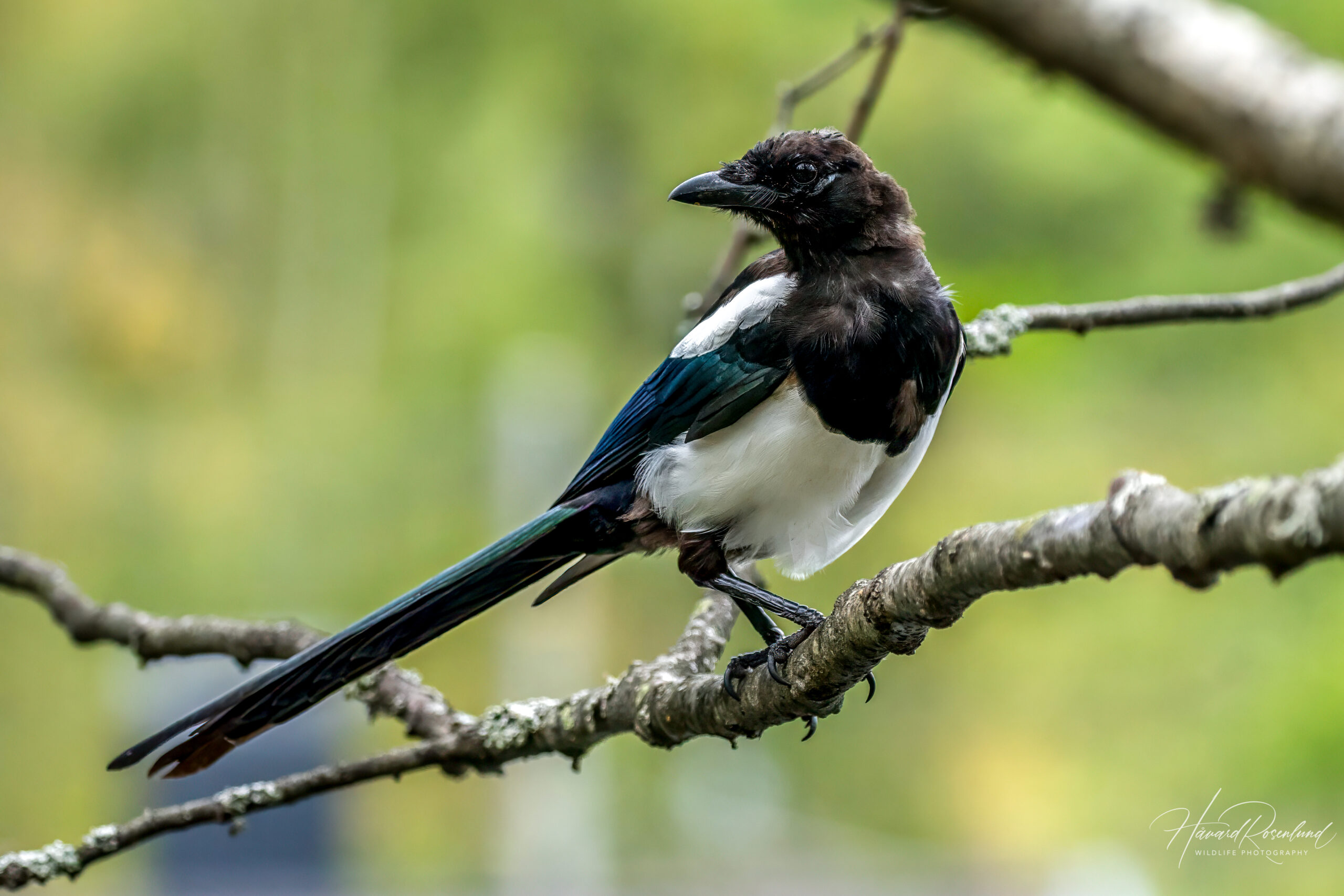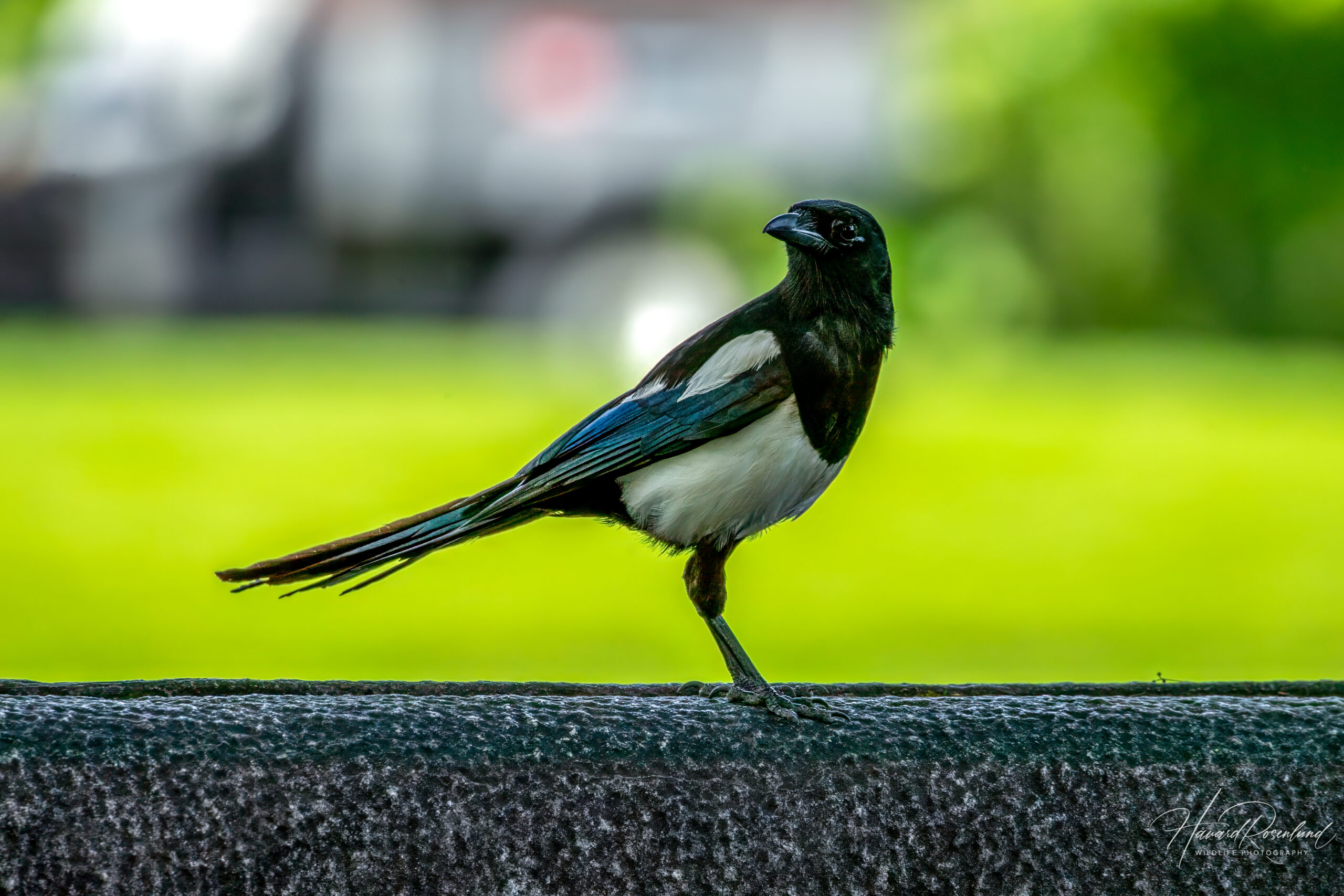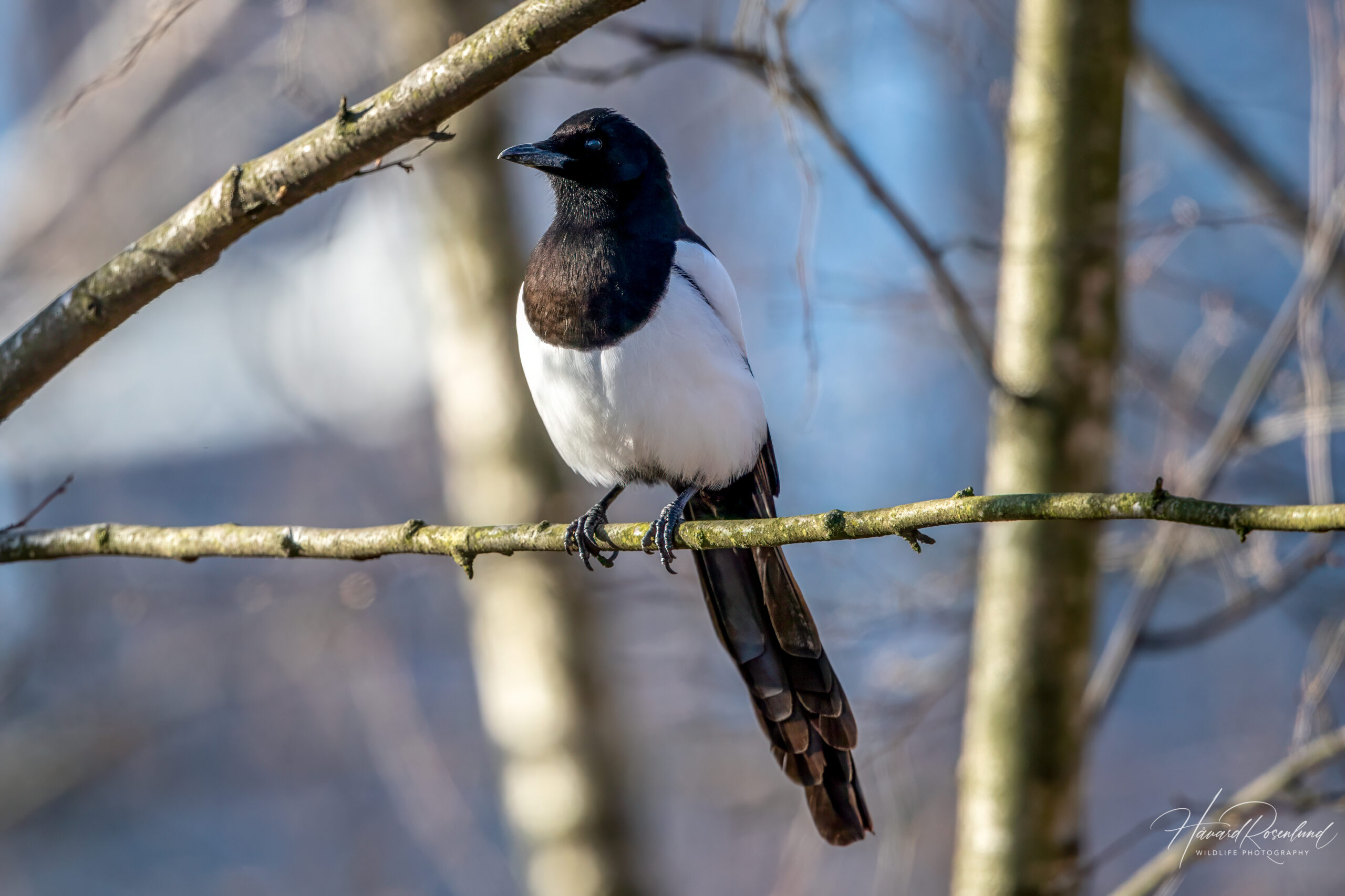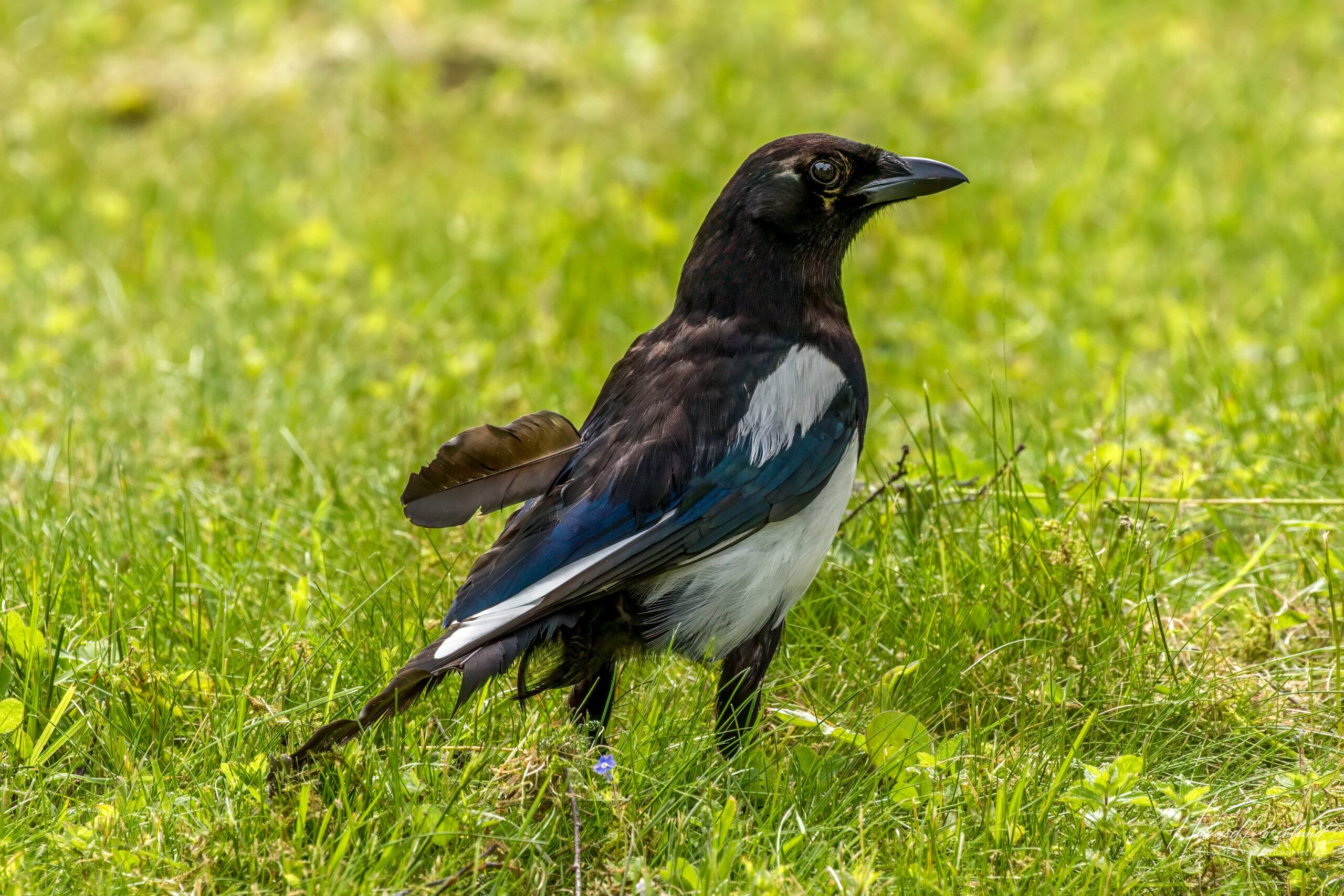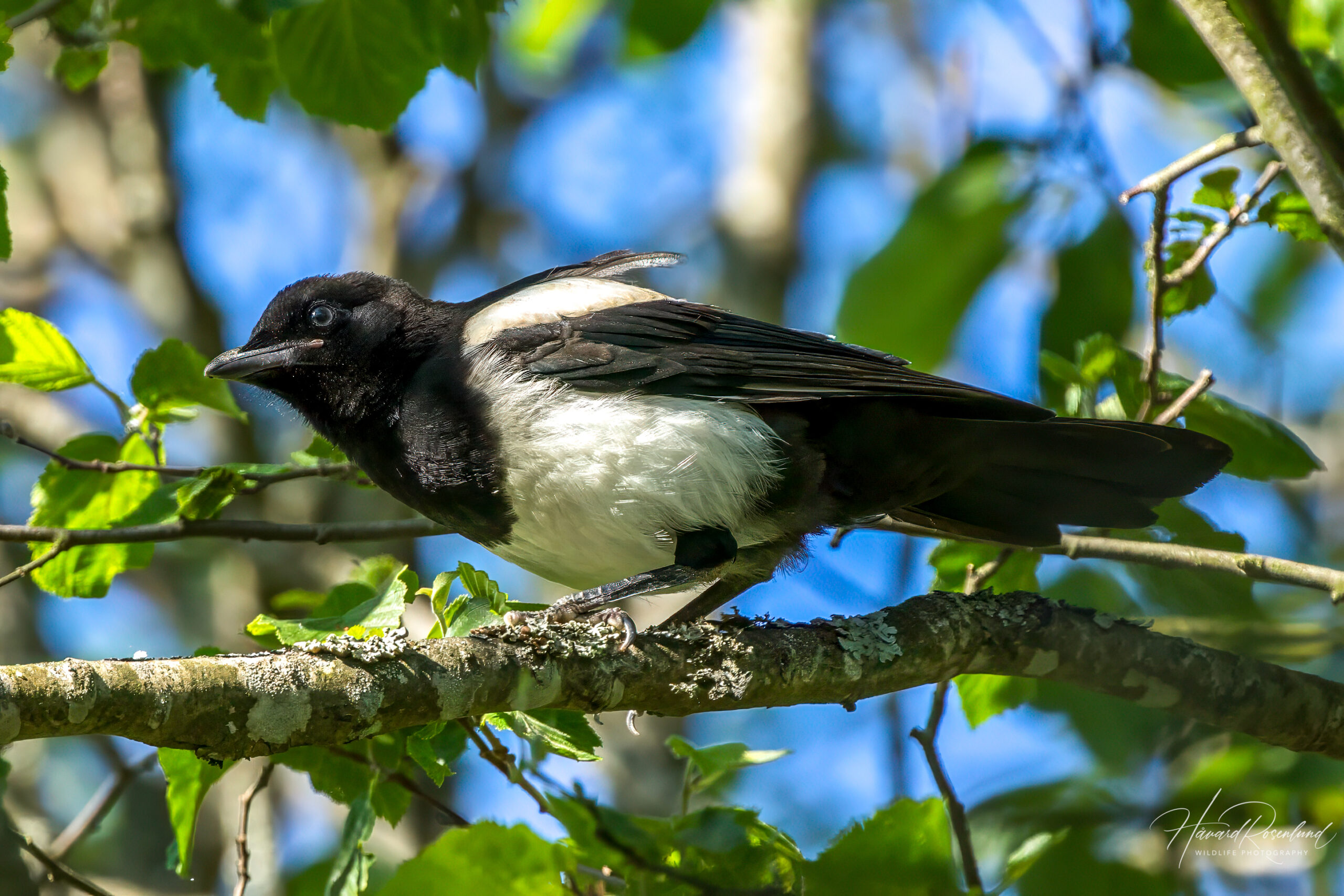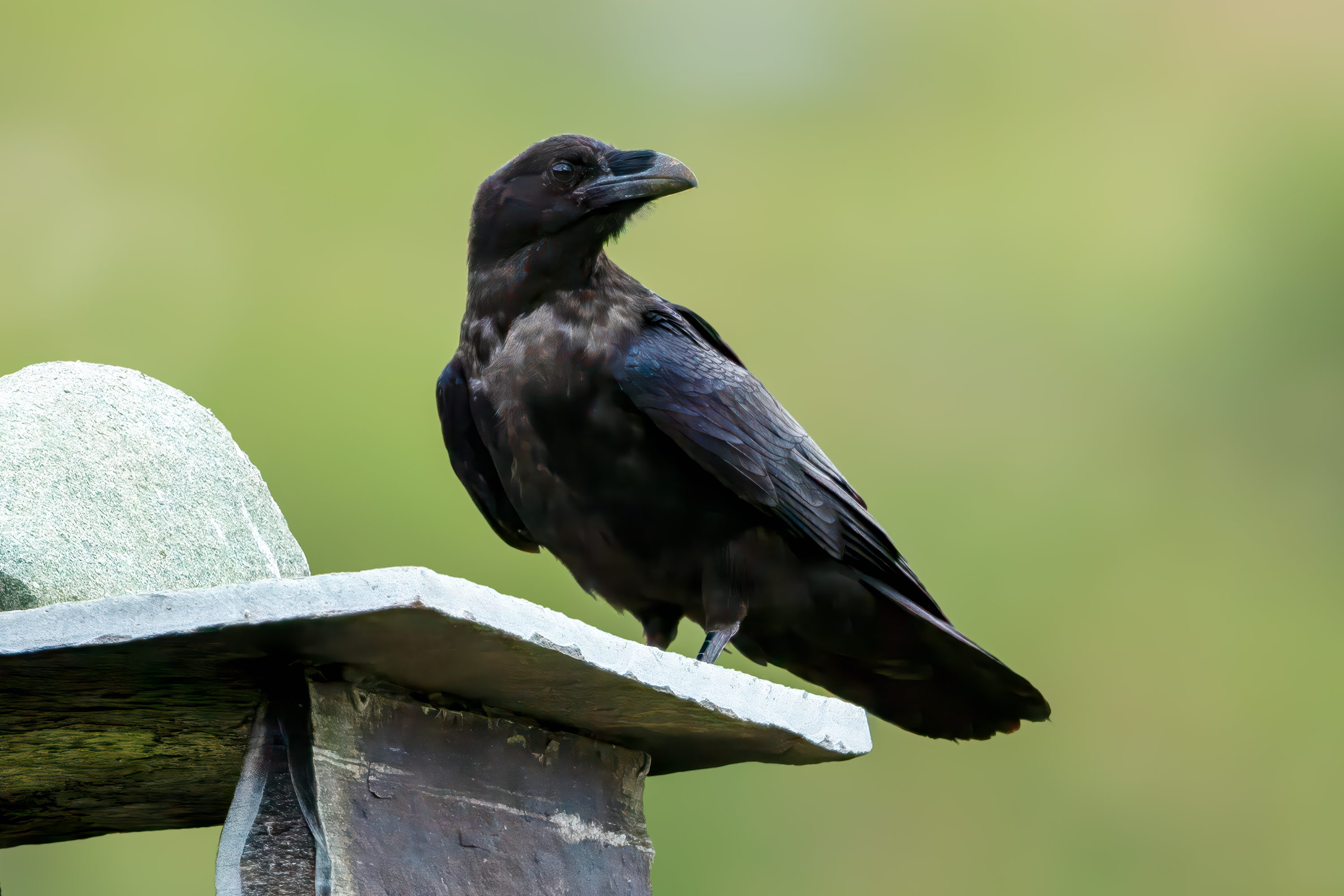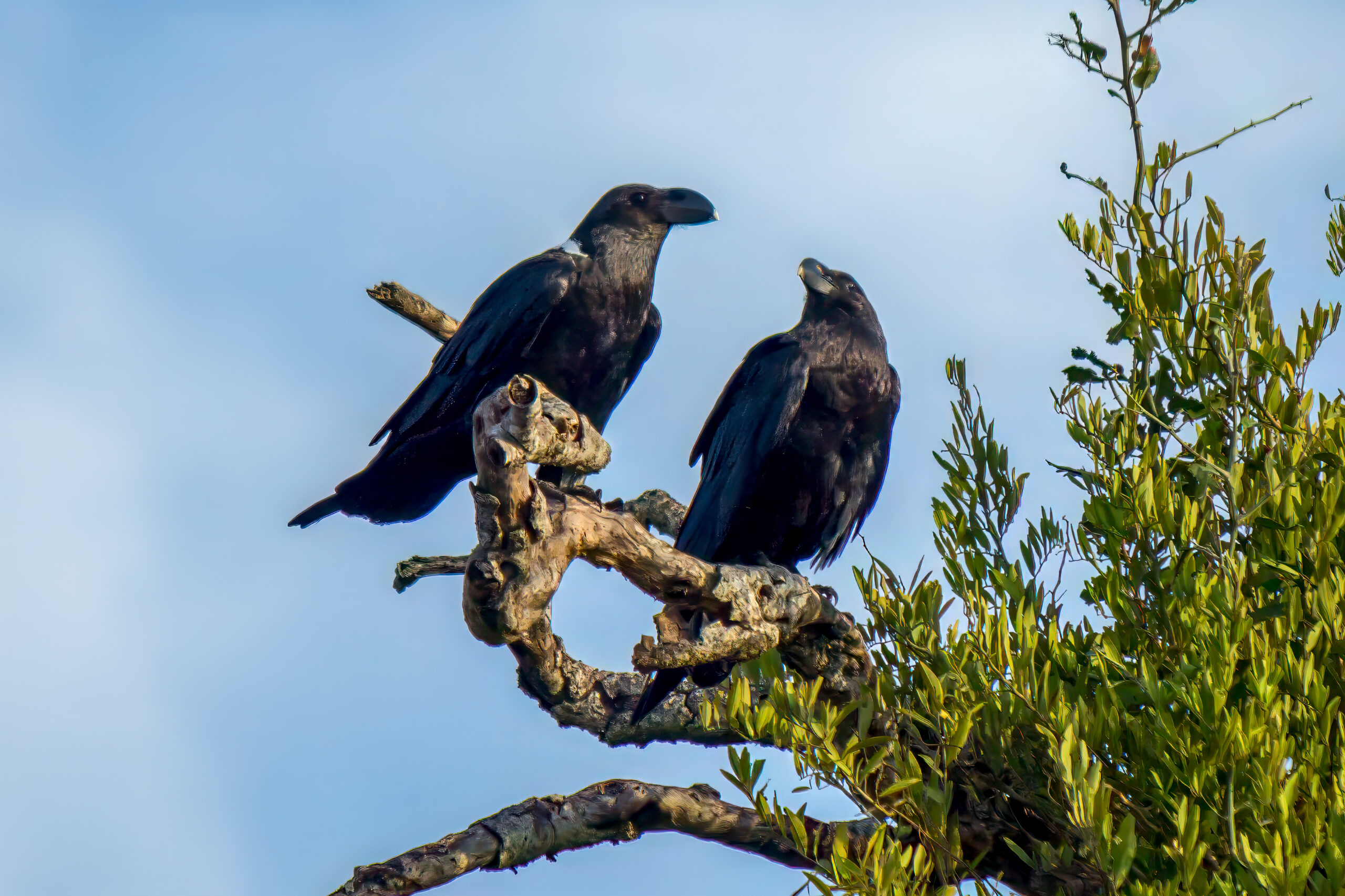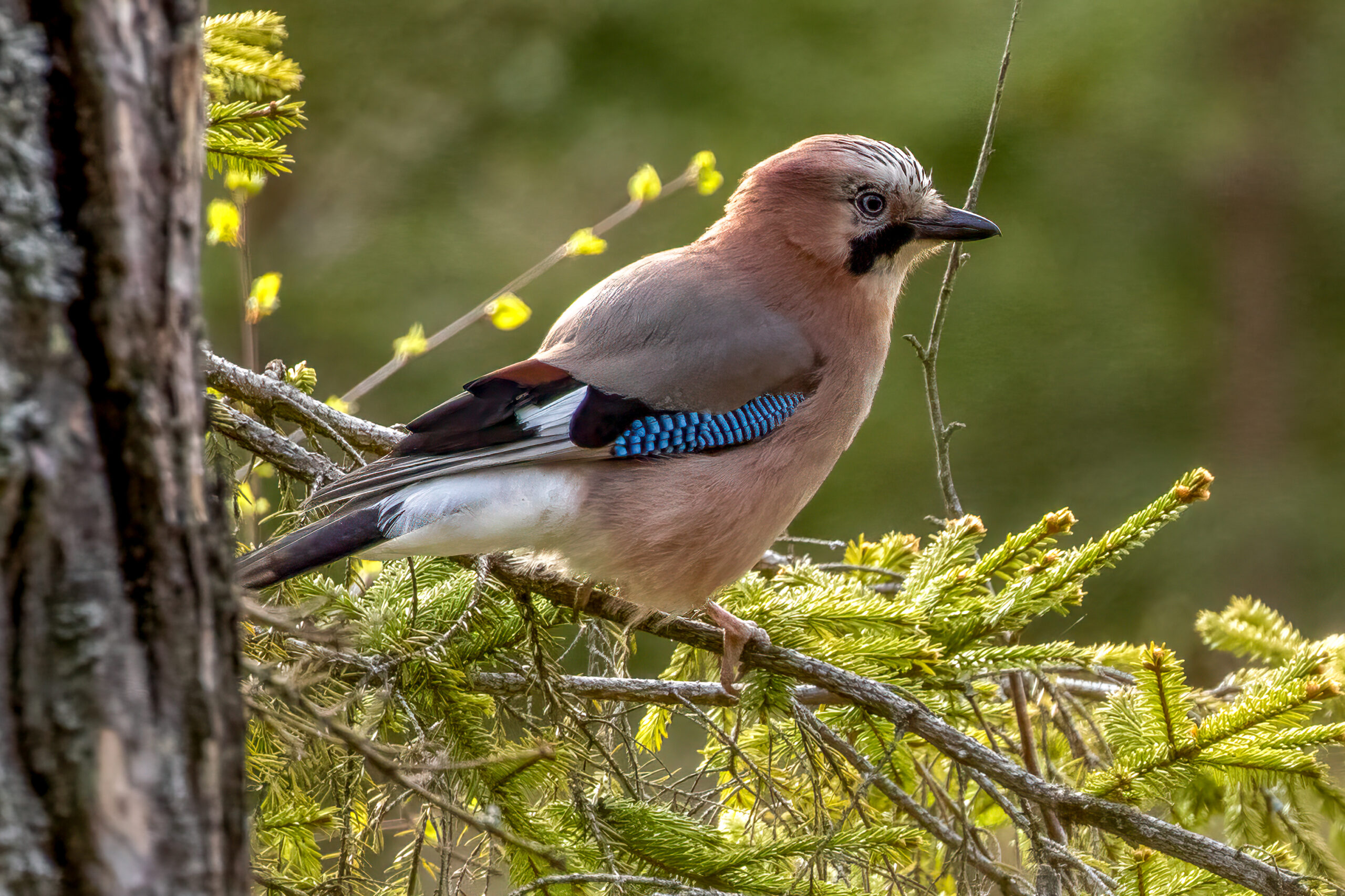Description
The Eurasian magpie or common magpie (Pica pica) is a common and widespread species of corvid. It’s a fairly large bird, growing to lengths of 44-46 cm (17-18 in), with the tail taking up over half the length. Males are slightly larger than females, weighing 210-272 g (7.4-9.6 oz). Females weigh 182-214 g (6.4-7.5 oz). The plumage is glossy black and white. It is white on the shoulder and on the belly, as well as on the edge of the wings when in flight. The rest of the bird is glossy black, with a metallic sheen of green, violet and purple. The metallic sheen is most obvious on tail and wing feathers. Young birds lack most of the gloss in the plumage.
Diet & habitat
Eurasian magpies are typically found in open countryside with scattered trees and often avoid dense forests and treeless habitats. It is very common in suburban and urban areas. It is an omnivorous bird and will eat almost anything edible, such as young birds and animals, eggs, insects, carrion, nuts, grain, vegetables, and quite often scraps and food waste from humans.
Intelligence
The Eurasian magpies is not only considered one of the most intelligent of birds, but also one of the most intelligent of all animals. Magpies, crows, and other members of the corvid family have large brains relative to their body-size, and the brain size to body ratio is equal to that of chimpanzees. Their intelligence is also said to be on par with that of the great apes, showing the same level of flexibility, imagination, prospection, social cognition, and casual reasoning.
Eurasian magpie is one of the few species of bird to have ever passed the mirror-test. This is a test designed to check if animals have the ability to recognize their reflection as themselves in the mirror. They are additionally adept at using tools, as well as the ability to plan for the future and make choices based on past experiences. Eurasian magpies also engage in elaborate social events, including grieving rituals, not unlike human funerals, where they gather around the dead magpie and lay down grass by the corpse.
Nesting
The Eurasian magpie is a monogamous bird, and many breeding pairs stick together over several breeding seasons. They most often keep to the same territory. Breeding season starts in spring. The males will then cover their glossy black wing feathers with the white loose feathers on the flanks, and the white shoulder feathers will be more spread out and conspicuous. This is likely done to attract females. The males also have a courtship display where they rapidly raise and lower their head feathers, as well as open and close their tail feathers like a fan.
The nest is preferably built in a tall tree, but if there is a lack of trees the Eurasian magpies might also use bushes or hedges. The nest is a large structure made of sticks glued together by earth and clay, lined inside with finer roots and smaller sticks. They will also build a domed structure of loose sticks above with a concealed entrance. Three to ten eggs, with five to six being the most common, are laid and incubated by the female for 21-22 days. The chicks are naked and blind after hatching and open their eyes after 7-8 days. Body plumage first appear after 8 days and wing feathers after 10 days. Chicks fledge after 27 days but will still be fed and cared for by both parents for several more weeks. Typically, only three or four chicks survive to fledge and one out of five survive their first year. The oldest magpie recorded was 21 years and 8 months old when it died. It was a ringed bird that was shot in 1947.
Status
This is a very common and widely distributed species across Europe and Asia. It does very well in suburban and urban areas and might even benefit from human habitation. There are no threats and it is listed as least concern on the IUCN Red List.




